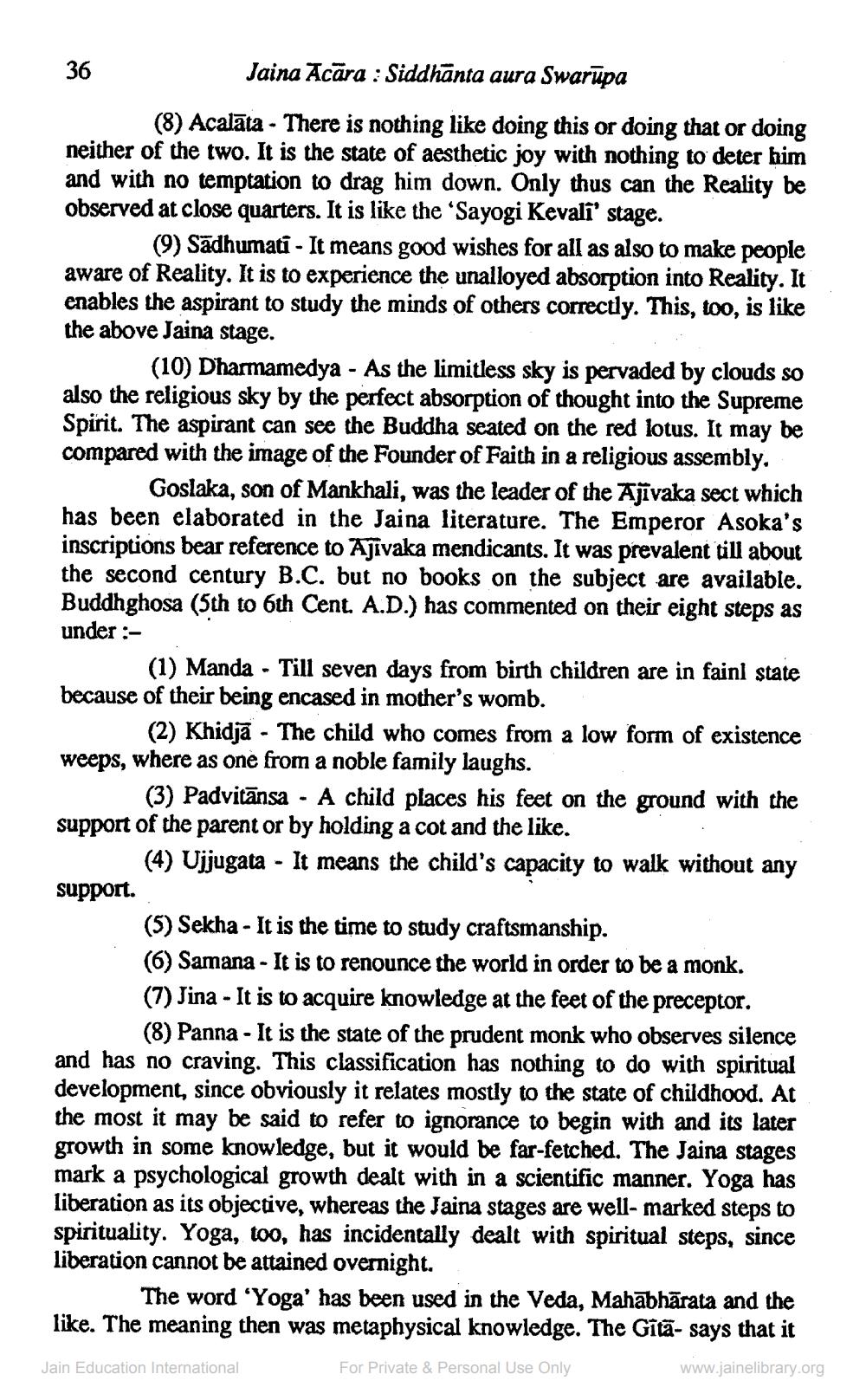________________
36
Jaina Acāra : Siddhanta aura Swarūpa
(8) Acalāta - There is nothing like doing this or doing that or doing neither of the two. It is the state of aesthetic joy with nothing to deter him and with no temptation to drag him down. Only thus can the Reality be observed at close quarters. It is like the 'Sayogi Kevali' stage.
(9) Sadhumati - It means good wishes for all as also to make people aware of Reality. It is to experience the unalloyed absorption into Reality. It enables the aspirant to study the minds of others correctly. This, too, is like the above Jaina stage.
(10) Dharmamedya - As the limitless sky is pervaded by clouds so also the religious sky by the perfect absorption of thought into the Supreme Spirit. The aspirant can see the Buddha seated on the red lotus. It may be compared with the image of the Founder of Faith in a religious assembly,
Goslaka, son of Mankhali, was the leader of the Asīvaka sect which has been elaborated in the Jaina literature. The Emperor Asoka's inscriptions bear reference to Ajivaka mendicants. It was prevalent till about the second century B.C. but no books on the subject are available. Buddhghosa (5th to 6th Cent. A.D.) has commented on their eight steps as under :
(1) Manda - Till seven days from birth children are in fainl state because of their being encased in mother's womb.
(2) Khidjā - The child who comes from a low form of existence weeps, where as one from a noble family laughs.
(3) Padvitānsa - A child places his feet on the ground with the support of the parent or by holding a cot and the like.
(4) Ujjugata - It means the child's capacity to walk without any support.
(5) Sekha - It is the time to study craftsmanship. (6) Samana - It is to renounce the world in order to be a monk. (7) Jina - It is to acquire knowledge at the feet of the preceptor.
(8) Panna - It is the state of the prudent monk who observes silence and has no craving. This classification has nothing to do with spiritual development, since obviously it relates mostly to the state of childhood. At the most it may be said to refer to ignorance to begin with and its later growth in some knowledge, but it would be far-fetched. The Jaina stages mark a psychological growth dealt with in a scientific manner. Yoga has liberation as its objective, whereas the Jaina stages are well- marked steps to spirituality. Yoga, too, has incidentally dealt with spiritual steps, since liberation cannot be attained overnight.
The word "Yoga' has been used in the Veda, Mahābhārata and the like. The meaning then was metaphysical knowledge. The Gitā- says that it
Jain Education International
For Private & Personal Use Only
www.jainelibrary.org




